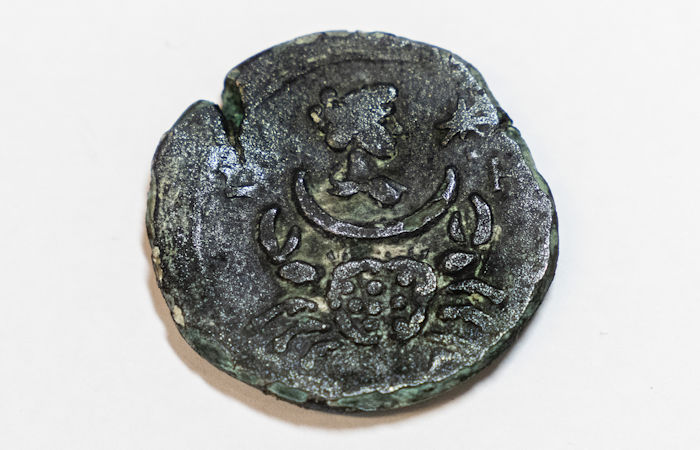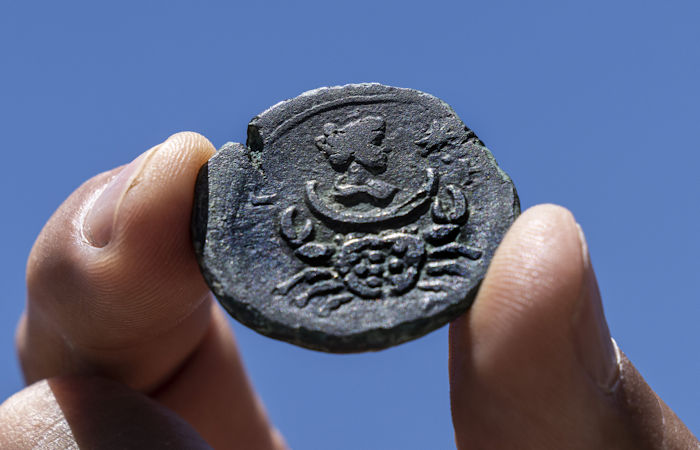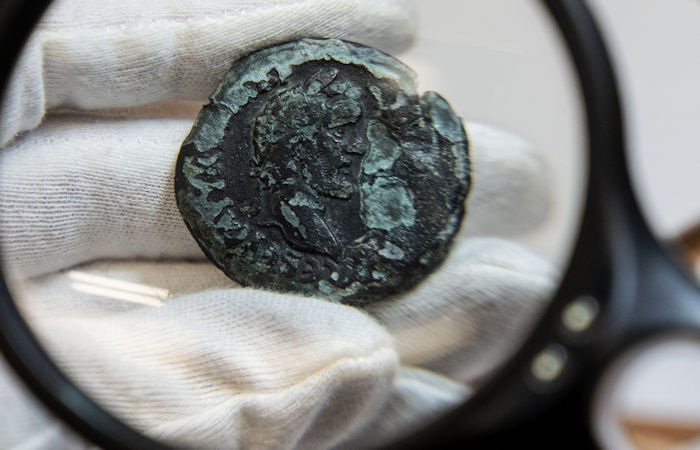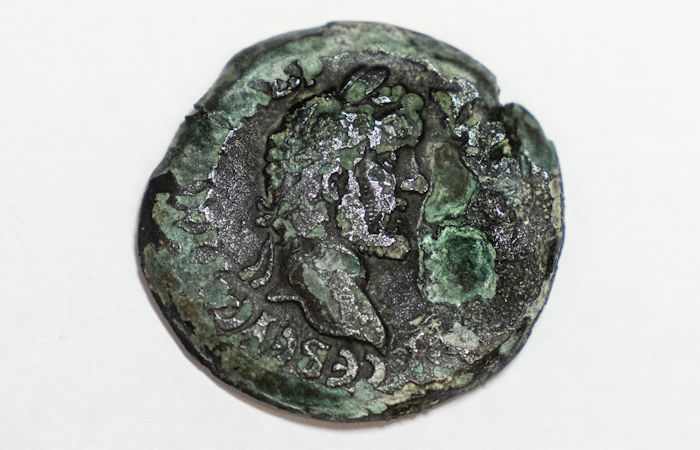Jan Bartek – AncientPages.com – A rare, perfectly preserved bronze coin depicting the goddess of the Moon, minted 1,850 years ago under Roman Emperor Antoninus Pius in Alexandria, who ruled between the years 138–161 A.D, has been discovered during an underwater survey off the coastal city of Haifa, Israel.
According to the Israel Antiquities Authority, the coin bears the image of the zodiac sign Cancer behind a depiction of the moon goddess Luna. It is part of a series of 13 coins depicting the 12 zodiac signs and one of the entire zodiac wheel. “

Credit: AP PH๏τo/Tsafrir Abayov

Credit: AP PH๏τo/Tsafrir Abayov

Credit: AP PH๏τo/Tsafrir Abayov

Credit: AP PH๏τo/Tsafrir Abayov
The zodiac concept was developed in Babylonia some 2,500 years ago. From Babylonia, zodiacal astral science spread to Egypt, the Greco-Roman world, and beyond. The mint of Alexandria struck a remarkable series of coins – commonly called the “Zodiac coins” – under Antoninus Pius in 144/5 CE. The coins featured astrological imagery such as the planets set in the signs of the Zodiac or various deities surrounded by the band of the Zodiac. Previous research has linked this coin series to the completion of a “Sothic cycle” in 139 CE.” 1
The IAA said it was the first time such a coin has been found off the Israeli coast.
See also: More Archaeology News
“These finds, which were lost at sea and disappeared from sight for hundreds and thousands of years, have been remarkably well preserved,” said Jacob Sharvit, director of the Israel Antiquities Authority Maritime Archaeology Unit. He said some of these discoveries are rare and complete “parts of the historical puzzle of the country’s past.”
Written by Jan Bartek – AncientPages.com Staff Writer
Expand for references
- Vaneerdewegh, Nick – The Egyptian “Zodiac Coins” of Antoninus Pius and the Sothic Cycle





